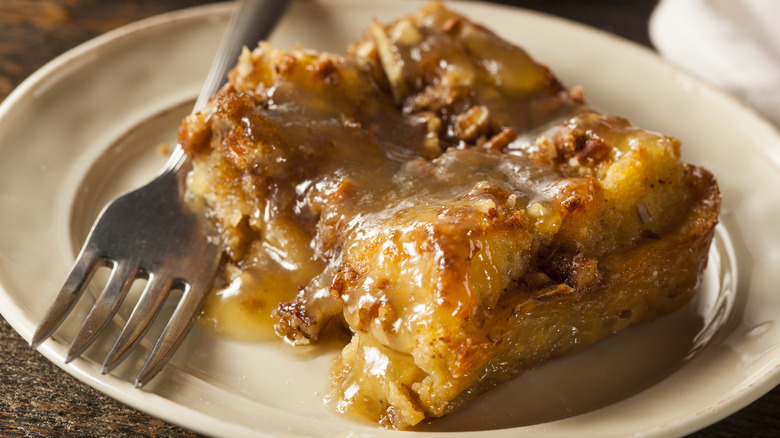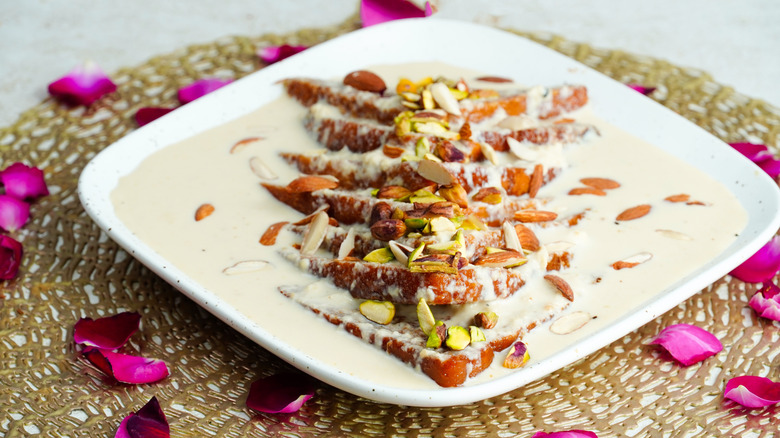The 11th-Century Origins Of Bread Pudding
Maybe it's a vintage dish your grandparents made or a dessert that dependably appears come Thanksgiving — bread pudding is an old-timey classic that seems like it's always been around. After all, the resourceful dish consists of stale bread melded with eggs, cream, and flavorful sweet ingredients; an always mouth-watering combo.
Subsequently, it's no surprise that the dish template stretches far back in history: Bread pudding's earliest roots date back to 11th-century England. The meal started out of economic necessity: People would rehydrate stale bread with hot water, and then cover it in sugar and spice, if they had any. The technique proliferated, and by the 13th century, the dish picked up the alternative moniker "poor man's pudding." Soon after, the inclusion of milk, eggs, and butter transformed bread pudding into its modern form.
For centuries afterward, people crafted bread pudding as a trusty dessert. The recipe arrived in the Americas soon after discovery, with settlers swapping more readily available cornmeal for bread. The dish then first became published in 1728, in a cookbook called "The Compleat Housewife" by Eliza Smith. Although now nearly three centuries old, the ingredients and preparation outlined were remarkably similar to a modern basic bread pudding recipe. So next time you're prepping a batch, know that you're taking part in a long and cherished history.
Bread pudding evolved into global styles
Because of its simplicity, bread pudding offers unbeatable malleability, a likely contribution to its enduring popularity. For this reason, too, you'll find variations around the world, which all have histories that date back centuries. Just about any bread type works in this dessert — you can use your leftover buns, a rustic loaf, or sourdough to delicious effect. So accompanied with the food's globe-trotting history, it's no surprise bread pudding has spun off into many traditional regional styles.
Especially numerous are Latin-American renditions, each reflecting unique regional ties. In Peru, there's the centuries old Ranfañote, a dish consisting of crispy bread cubes soaked in a molasses-heavy syrup and accompanied with spices, fruits, and peels. Created in Afro-Peruvian communities, it's a unique showcase of the country's culinary diversity. Meanwhile in Mexico — where the dish is called capirotada — a dark sugar piloncillo similarly lends a complex sweet character, but here it's paired with cheese. And in Colombia, the dessert goes by the name Pudín de pan, and uses condensed milk for sweetening, alongside familiar spices like cinnamon and vanilla.
Elsewhere in the world, the delicious bread pudding concept keeps changing. In South Asia, a pudding called Shahi Tukda has been consumed since as early as the 16th century. Crafted from ghee-fried bread, the dessert gets covered in a sugar syrup and reduced milk, before being served alongside nuts and dried fruit. It's a rendition quite distinct from the British original, thereby a testament to the dish's incredible range.


